Three Sheets
Dalston
Close
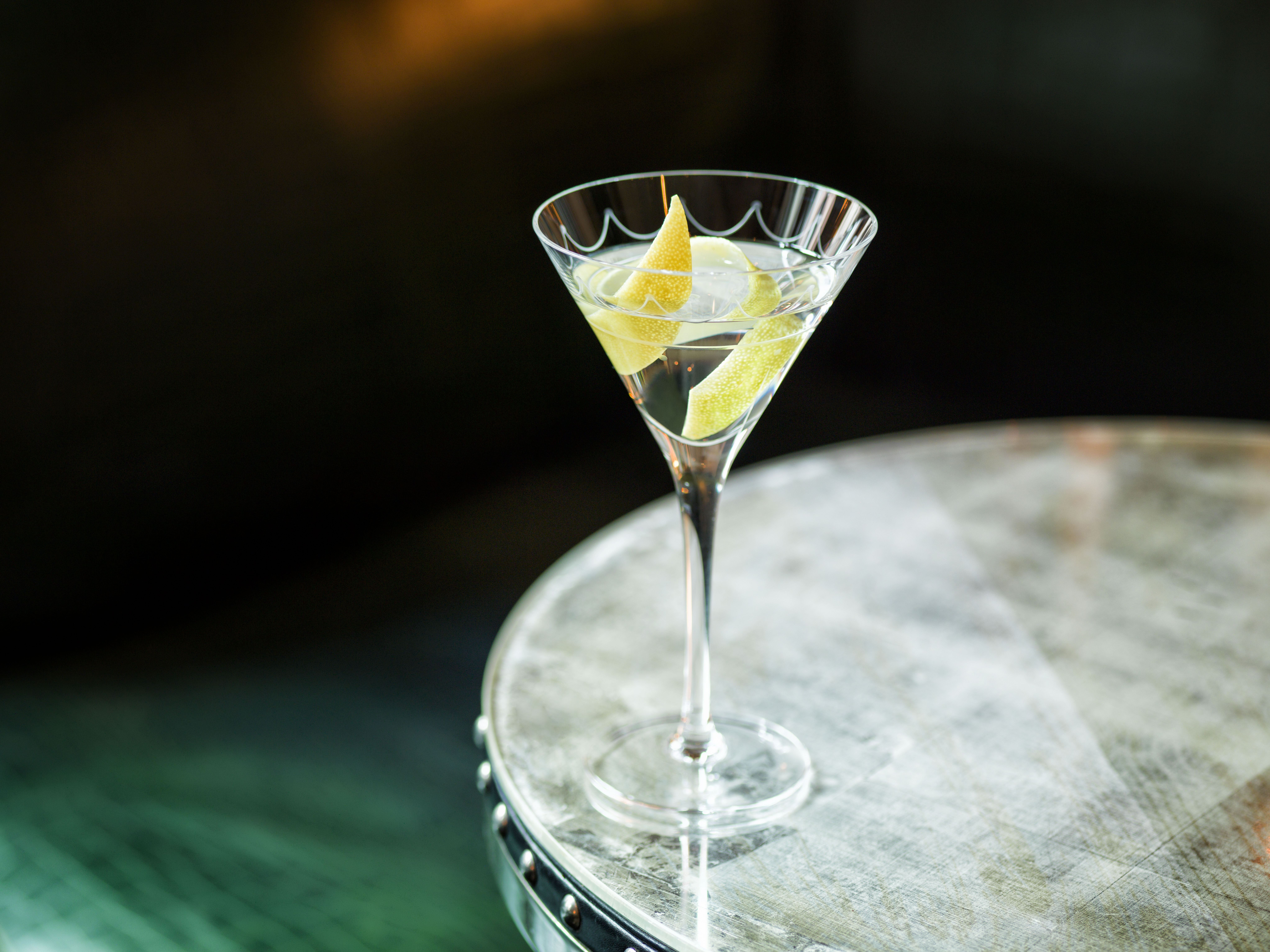
Some like it wet, some like it dirty, but it’s most popularly enjoyed bone dry. Of course, we’re talking about the classic Martini cocktail.
Whether you’re at a London pub drinking an espresso martini on draft, joking about the Vesper Martini’s origins with bartending maestro Alessandro Palazzi at Dukes Bar, a favoured watering hole for the cocktail’s inventor, or have found yourself at one of the world’s best bars enjoying a micro-sized One-Sip Martini garnished with a plump blue cheese-stuffed olive, you’re undoubtedly experiencing what it’s like to drink in a new golden era for the Martini in London.
Taxonomically, this stylish, spirit-forward serve is a balance of gin or vodka, dry French-style vermouth, and bitters (typically orange) — a formula that has evolved throughout its history to the modern standard perfected by legendary bartenders like Salvatore Calabrese. Purists will point out that an espresso-dosed cocktail isn’t a Martini by definition – yet the Martini is one of the only cocktails that’s been bastardised, and arguably further popularised, by imposters which are also served in the signature V-shaped Martini glasses.
“All the innovation and progression of the spirits and drinks categories have helped elevate the Martini over the past decade,” Agostino Perrone, director of mixology at London’s world-renowned Connaught Bar, says. “Through bespoke and high-quality ingredients, bars have been able to create their own signature serves and express their identity through the Martini.” It’s this virtually endless palette of contemporary flavours available to bartenders which has injected new life into the Martini, but ingredients are only one piece of the puzzle.
Along with the classic iteration, bartenders’ obsession with refining beloved classics with these new ingredients, compounded with the influence of historical and cultural moments, has resulted in the Martini becoming a symbol of quintessential London cocktailing. And looking back, its rise in the city can be traced back more than a century.
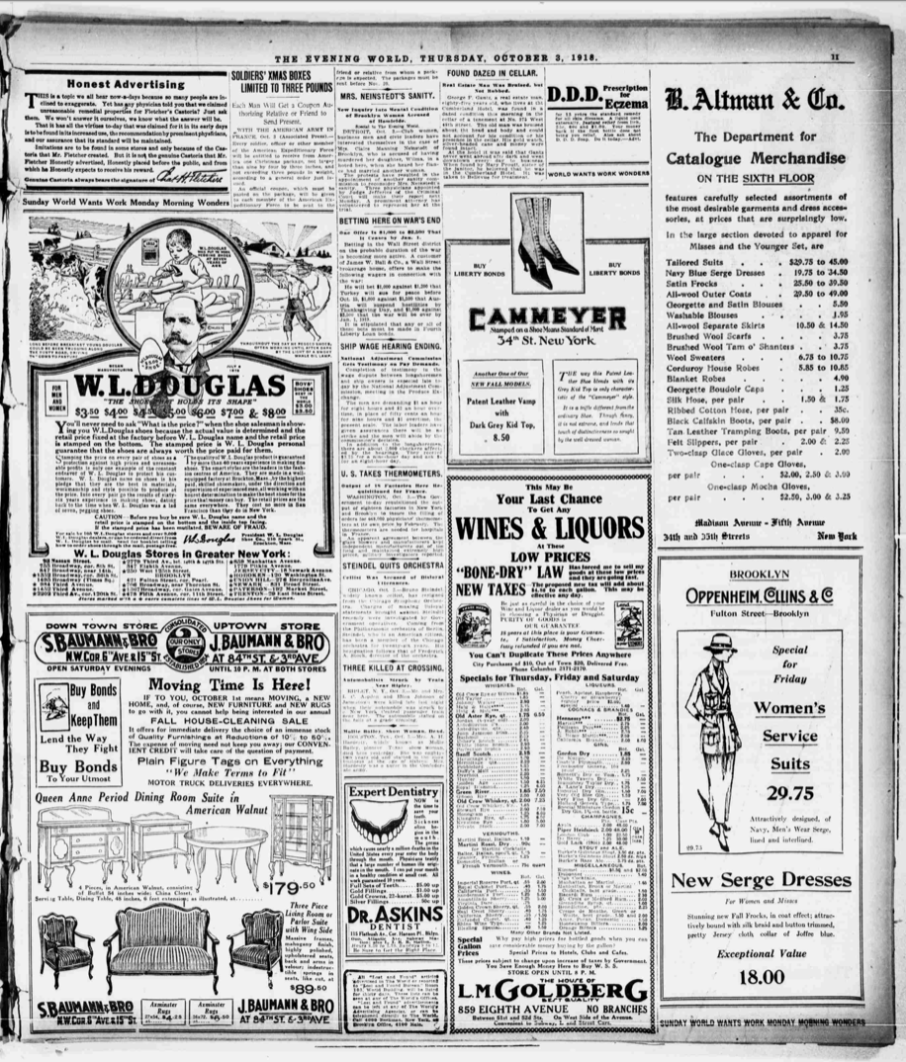
The Martini’s Origins in London
Even though the Martini has become synonymous with London, thanks to its historical and cultural relevance over the last century, and breadth of variants that the city has birthed—namely neo-martinis like the Espresso Martini and classic variations like Fleming’s Vesper—the cocktail’s blueprint was developed in America, where the drink originated.
According to drinks historian David Wondrich, the Manhattan, the parent of all cocktails made with a spirit, vermouth and bitters—the Martini being one derivative—is thought to have been mixed in some capacity as early as the 1870s. But Wondrich claims that definitive proof of the Manhattan’s existence didn’t surface until 1882 in a Michigan newspaper named the Crawford Advocate when the definition of the Manhattan was finally recorded in print.
Vermouth is the key component in the Manhattan, and subsequently the Martini cocktail; so, tracing the Martini’s origin is inseparably tied to the history of vermouth’s arrival in America. While England was no stranger to vermouth in the 1800s, it was in the U.S that the formerly medicinal, fortified wine was first mixed in a cocktail.
Dry, French-style vermouth—the type found in the prototypical Martini—had been available in America by way of the Noilly Prat brand since 1844, but it wasn’t until Italian sweet vermouth producer Alessandro Martini of Martini, Sola & Cia exported his brand’s vermouth in bulk to the U.S in 1868 did the vermouth-in-cocktails phase really boom. Later, in 1879, the company became known as Martini & Rossi.
“Even though the Martini has become synonymous with London, the cocktail’s blueprint was developed in America, where the drink originated.”
The timeline of Martini & Rossi’s availability in the U.S verifies Wondrich’s theory of the Manhattan likely being imbibed during the 1870s, two years after Martini & Rossi’s arrival, and corroborates with the timing of when the Manhattan’s definition first appeared in print in 1882.
By 1884, O.H Byron’s The Modern Bartender’s Guide was published and listed an array of Manhattan-style cocktail recipes that would become known as the Martini’s progenitors. These cocktails were laced with Old Tom gins, Dutch genevers, sweet Italian vermouths, curaçao, and maraschino liqueur. It was also at this point that the dry French style of vermouth began featuring in cocktails, and as traced by Wondrich, a decade later in 1897 the Dry Martini became ubiquitous.
The new Dry Martini recipe began appearing in bartending books around the world, including the American Bar Recettes des Boissons Anglaises et Américaines written in 1904 by a bartender at the Ritz Paris — a book credited with being the first to record the recipe of a “Dry Martini Cocktail” in print. This Dry Martini formula, which was a 50:50 split of gin and vermouth — wet by today’s standards — was the vogue for Martini drinking. It was one of several recipes preserved by London bartending legend Harry Craddock, author of The Savoy Cocktail Book (1930) and former head bartender at The Savoy’s American Bar, who cut his teeth in the pre-Prohibition bar trade.
When Craddock migrated back to England in 1920, he brought his American bartending flair and recipes with him. Craddock’s American-influenced Martini cocktail would become a staple at many of London’s iconic hotel bars, including not only the American Bar at The Savoy, but also Dukes Bar, The Dorchester, The American Bar and Brown’s Hotel. He established himself as the “Godfather of the Martini” cocktail in London with an array of recorded Martinis, from dry to perfect—a split of dry and sweet vermouth mixed with gin — and planted the seed for the Martini’s rise to prominence in London in the decades to come.
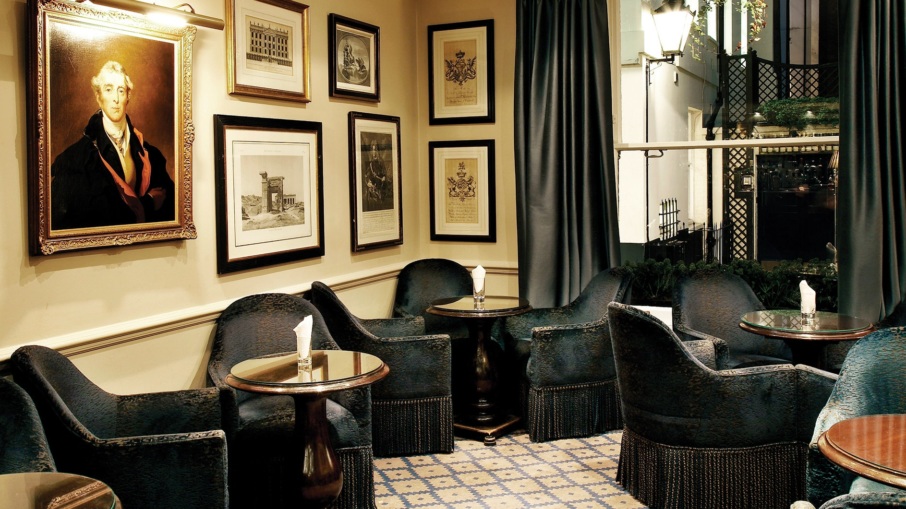
The Martini Becomes a London Pop Culture Icon
Enter: Ian Fleming. When Fleming wrote Casino Royale in 1952, the inclusion of his original Vesper Martini (gin, vodka, blanc vermouth, orange bitters) in the novel elevated the now-popular Martini to new heights. “Fleming’s work made Martinis fashionable and ensured that both the cocktail and the preparation became a staple of popular culture,” says Alex Kratena, co-owner and operator of Tayēr + Elementary.
James Bond’s iconic phrase, “shaken, not stirred”, gave meek bar flies the confidence to conjure an opinion about how their Martinis should be prepared, and provided boisterous tipplers an excuse to recite the character’s famous line — even if it was just for the hell of it.
This mainstream opinion of how a Martini should be served created an “aura of sophistication” around the cocktail, according to Noel Venning, owner of the award-winning Three Sheets, and the Martini evolved from a cocktail most associated with high society, to a serve that elevated the drinking experience of all.
“Mainstream opinion of how a Martini should be served created an aura of sophistication around the cocktail, and the Martini evolved from a cocktail most associated with high society to a serve that elevated the drinking experience of all.”
Over the next few decades, London’s history-filled hotel bars at which Craddock tended bar, such as The Dorchester and American Bar, maintained the standard for the prototypical Martini as they’d done since the early 1900s — a Martini that ranged from bone-dry, to not much wetter than a Vesper (a cocktail which typically calls for 15 millilitres of Lillet Blanc vermouth).
“One of my favourite moments in the Martini’s lifespan were the quips created in the first half of the 20th century for how dry you could have a Martini. Point the gin bottle towards France, and so on,” says Bea Bradsell, cocktail enthusiast and the daughter of the late Dick Bradsell, inventor of the Espresso Martini (originally known as the Vodka Espresso). The latter phrase refers to a request for a vermouth-less martini: as British playwright Noël Coward put it “A perfect martini should be made by filling a glass with gin then waving it in the general direction of Italy.” It’s a philosophy shared by many Martini drinkers of that generation.
While this dry Martini remained fashionable throughout most of the 20th century, the 1970s, ‘80s, and ‘90s spawned a range of Martini imposters that were defined by anything served in a Martini glass, regardless of the drink’s contents. And it was Bea Bradsell’s father, Dick Bradsell, who pioneered this fashionable category of unorthodox, but ultimately more approachable, “Martinis”.
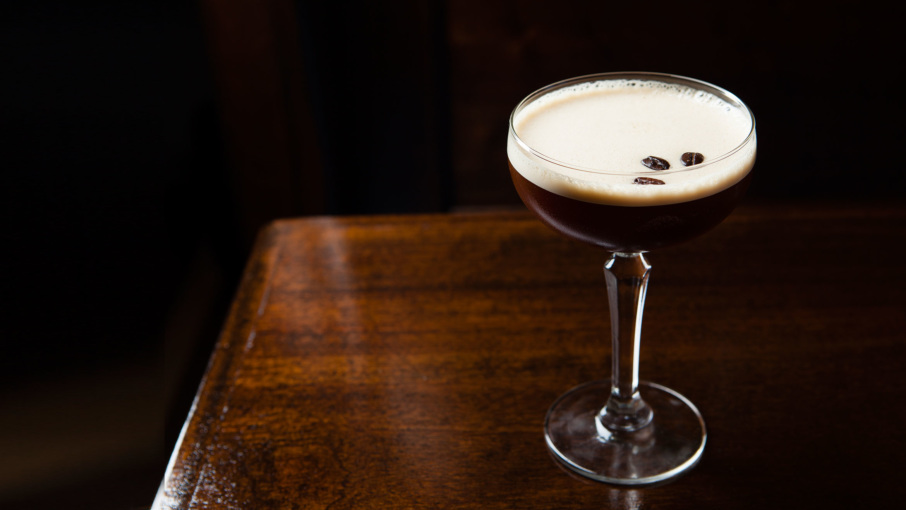
Imitation, The Sincerest Form of Flattery
The most noteworthy of these cocktails that mimicked the sophistication of the dry Martini – and a drink enjoying its own revival, in the U.S specifically – was Dick Bradsell’s Vodka Espresso.
“I think it’s fair to say Dick Bradsell’s Espresso Martini has had a huge impact [on the progression of the Martini category],” says Venning. “The popularity of this drink knows no bounds and continues to go from strength to strength across the globe.” Originally created in London for a young Naomi Campbell or Kate Moss, who requested Bradsell make her a drink that would, as the story goes, ‘wake me up and f-ck me up’, the Espresso Martini quickly established itself as the go-to tipple for bar guests who needed a liquid pick-me-up on a night out. It’s a serve ubiquitous on drink lists all over London, both in its classic form, as well as in simple riffs such as Homeboy’s Vodka Espresso, which calls for a salted caramel syrup instead of the typical simple syrup for a richer, more dessert-like take on the classic.
“The flavours [of the classic Vodka Espresso] worked, so dad took it with him to every venue [he consulted and worked at] continuing to develop it until he finally found his perfect recipe,” Bea Bradsell says. “He took the Brandy Alexander as his inspiration as two disparate flavours with bridging ingredients that help create the beloved drink we know today.” By the senior Bradsell spreading his creation throughout London’s bars, the Espresso Martini became immortalised.
Around the same time—in the ‘80s and early ‘90s—a pale-pink hued elixir served in a V-shaped Martini glass began popping up in bars across America. The Cosmopolitan was born in the bustling gay bars of Provincetown, Massachusetts during the ‘70s, before travelling bartenders and the gay community transplanted the vibrant drink to new cities.; One of which was the trendy San Francisco where John Caine gave the drink new life in 1987 at the supper club at which he tended bar.
The version of the Cosmopolitan that became popular wasn’t the refined classic which we think of today, though. Instead of the sophisticated balance of citrus vodka, fresh lime juice, triple sec, and cranberry juice, this pre-craft cocktail Cosmo was a cloying mix of vodka, Rose’s lime juice, triple sec, and cranberry cocktail juice. It wasn’t until 1988, the year after Caine landed in San Francisco, that the Cosmopolitan would receive its much-needed facelift by New York bartender Toby Cecchini (current owner of Brooklyn’s The Long Island Bar), who transformed it into a proper craft cocktail. Cecchini is credited with the creation of the modern Cosmopolitan, a designation granted upon him by a visiting English journalist who had been tasked with tracking down the cocktail’s true creator.
While the pink-hued tipple gained popularity in American cocktailing circles, the Cosmopolitan didn’t reach global fame until Carrie Bradshaw made it the go-to drink for fashionable woman during the late-’90s and early noughties, thanks to its appearance on Sex and the City. At the same time, bar legend Dale DeGroff brought the cocktail to Europe in 1997, when he was a judge at an Absolut event. He served 200 Cosmopolitans with flaming orange peels but resorted to using cloudberry juice instead of cranberry as the latter wasn’t available in the U.K at the time. It was such a hit that DeGroff was hired by Ocean Spray to work on the release of red and white cranberry juice in the U.K, and the Cosmopolitan quickly found its way into pubs and bars across London soon thereafter.
A Rising Tide That Lifts All Boats
Venning credits the Cosmopolitan and its popularity on Sex and the City as being one of the three key cultural moments that catapulted the Martini cocktail into the global mainstream for a new generation of drinkers — a sentiment shared by Kratena of Tayēr + Elementary.
Even though the Cosmopolitan defied the contemporary Martini build of a spirit, vermouth (typically dry), and bitters, the V-shaped vessel in which the drink was served, and the “Martini lists” on which it was frequently found in London during its heyday alongside flavours such as Lychee, Apple, and Espresso Martinis — none of which are technically Martinis, either — still championed the bona fide Martinis found at Dukes Bar and the American Bar.
As the respected drinks writer Simon Difford notes, “without the ‘Martini’ cachet added to sugar-charged crowd-pleasing cocktails such as the French Martini, Breakfast Martini and of course the Espresso Martini, there would not have been a cocktail renaissance at all. At least, not during the 1990s.” It was an exemplary case of a rising tide lifting all boats.
“Imitation Martinis like the Vodka Espresso are arguably as much a part of London Martini history as the Martinez and Manhattan, American-born progenitors to the classic we’ve come to acknowledge today.”
During the ‘90s, vodka brands used these martini-style serves as vehicles for elevating their brands, positioning the subtly-flavoured spirit and all of its artificially-flavoured expressions as a requisite for fashionable drinking. This period of vodka’s massive popularity would be the impetus for the creation of the infamous “Pornstar” Martini — a drink created by the late London bar legend Douglas Ankrah, and made with vanilla vodka, lime juice, passion fruit liqueur, and vanilla syrup with a sidecar of Champagne. “It was a great drink and a truly standout name, but would it really work?” Jared Brown, cocktail historian, and master distiller at Sipsmith in Chiswick, says of the unorthodox Martini-style cocktail. “[At the time] I couldn’t see bars stocking passion fruit for it or pouring sides of sparkling wine. But time proved me utterly wrong on that one.”
These neo-martinis changed the way thirsty bon vivants and aspiring barflies thought about what could constitute a ‘Martini’, while the appropriation of the classic Martini’s namesake also allowed drinkers to unashamedly order a fruity cocktail with a tinge of sophistication at a time when the city’s drinks industry was suffering from an image problem incurred after the excesses of the 1980s. Dogmatic bartenders will tell you that a passionfruit-dosed Pornstar Martini isn’t a Martini by definition – but the cocktail and others are arguably as much a part of London Martini history as the Martinez, Manhattan, and Martine, American-born progenitors to the classic we’ve come to acknowledge today.
From Harry Craddock’s influence at The Savoy’s American Bar Post-Prohibition and Fleming’s Vesper, to the more recent pop culture influences of the Espresso Martini and Cosmopolitan, the Martini cocktail went from a drink loved by drinks enthusiasts and boozehounds to a cocktail found everywhere, from London’s most revered hotel bars to Wetherspoon pubs.
But while these popular imitation Martinis circulated throughout most bars in the English capital during the ‘80s and ‘90s, there was one Amalfi-born barman who was concurrently elevating the classic Martini to new heights in the Big Smoke.
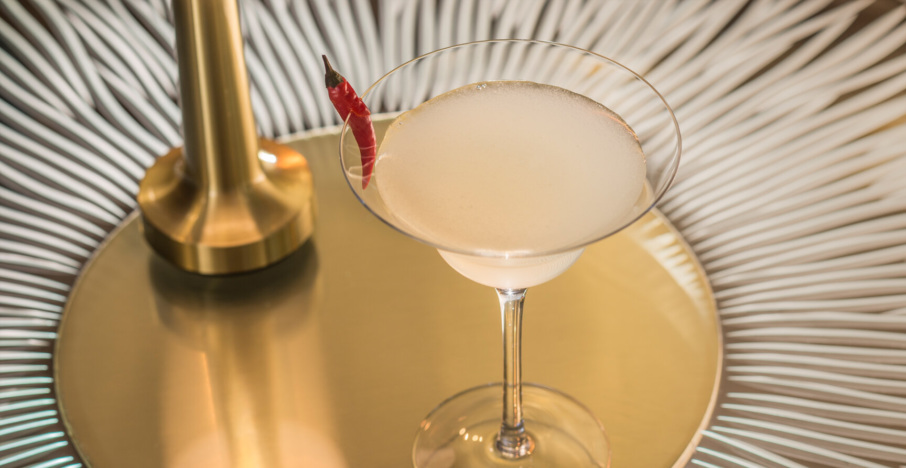
The Drink’s New Golden Age in London
While drinkers were getting to grips with progressive waves of Martini imitators, Salvatore Calabrese was earning his stripes at the iconic Dukes Bar in the early 1980s, where he was refining the classic Dry Martini. In 1985, the American travel journalist Stanton Delaplane, the man credited with popularising the Irish Coffee in America, stayed at Dukes in London, and visited Calabrese at the bar each night for a Martini.
One of Calabrese’s classic gin Martinis — served in a chilled glass with ice-cold gin, a kiss of dry vermouth and a lemon twist — impressed Delaplane so much that the journalist declared it “the best Martini in England,” and word quickly spread of its unrivalled perfection, catapulting Calabrese and Dukes Bar into the limelight.
Calabrese left Dukes in 1994 and took his talents to the Library Bar at The Lanesborough where he’d contribute his own modern riffs on the classic Martini in the Breakfast Martini and Spicy Fifty. Amid the popularisation of the city’s neo-martinis, Calabrese simultaneously wrote his own chapter of Martini history and laid the foundation for the Martini innovations to follow.
During the aughts, and into the subsequent decade, bartenders regained a celebrity-like status that hadn’t existed since the times of Jerry Thomas, Harry Craddock and other famous bartenders of the 19th and early 20th centuries. Pioneering bars of the craft cocktail movement in London such as Sasha Petraske’s Milk & Honey, White Lyan, and 69 Colebrooke Row began reclaiming cocktails of the past, putting mixed drinks—Martinis in particular—on the same pedestal that French cuisine and molecular gastronomy-focused restaurants had done for food in the decade prior.
“These were the years of the ultimate elevation of mixology to a refined, elegant form that draws inspiration from the classics and moves away from the eccentricity of the previous decades,” Perrone says. “Famous bartenders such as Dale DeGroff and Salvatore Calabrese introduced a new way of making and drinking cocktails, with a peculiar attention to details and to service.” Bartenders ensured that their glasses were always chilled, that they were stirring to complete dilution, and that the Martinis were garnished and served at the perfect temperature.
With the release of new premium liquors such as Sipsmith’s London Dry gin, and exquisite vermouths like Mancino Vermouth, a focus on culinary-driven drink ingredients (such as house-made distillates, ferments, and bitters), and the overall burgeoning craft cocktail movement of the early 21st century, London was poised for the cocktail to hit unprecedented heights in flavour and quality — the prelude to the drink’s current run of popularity.
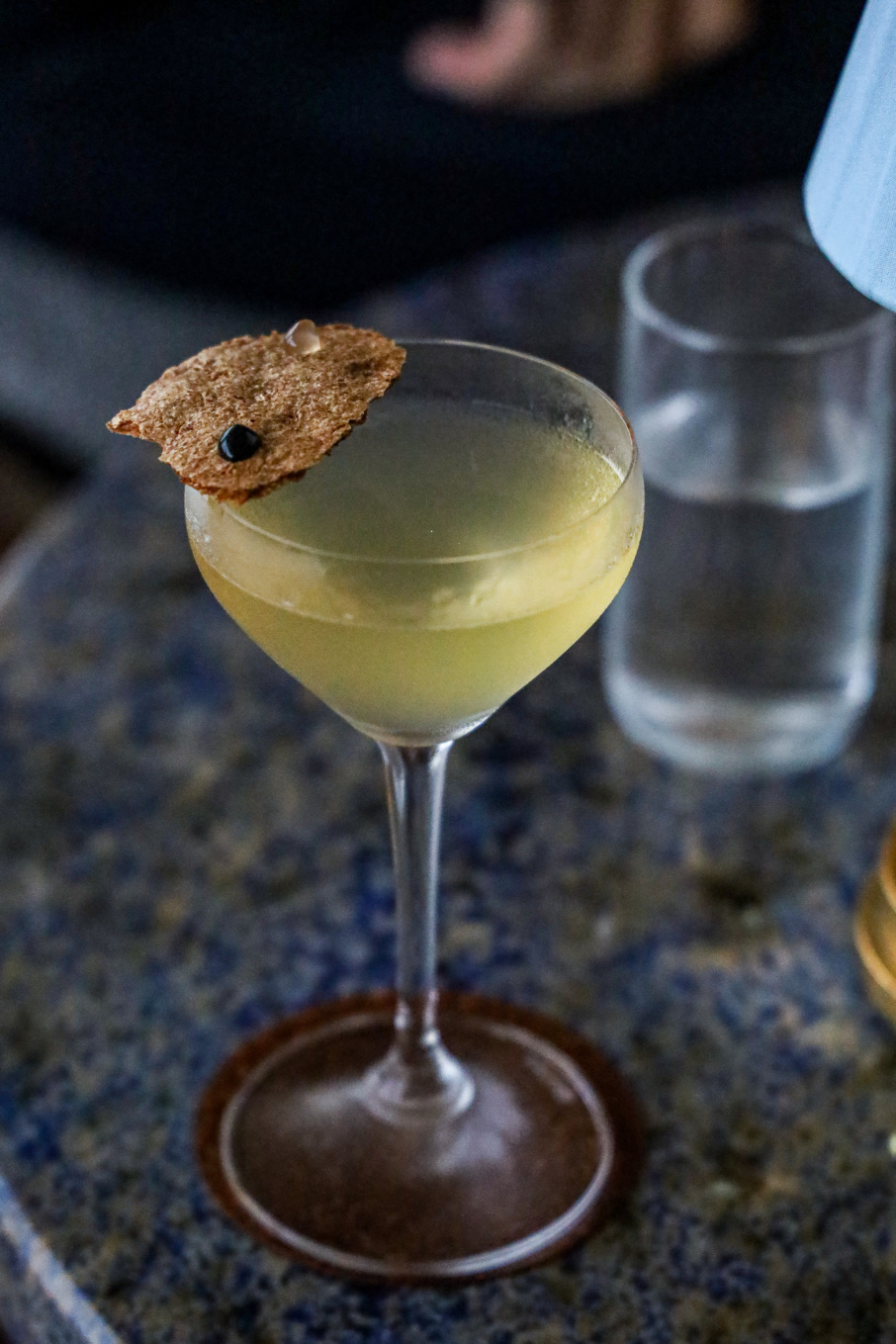
Pushing the Boundaries of The Classic Martini
As bartenders refined and mastered classic cocktails, the world’s best bars started exploring what was next, or possible with these new ingredients. A new crop of high-concept cocktail bars opened, pushing the boundaries of the cocktail — the since-shuttered White Lyan being one of them.
Ryan Chetiyawardana’s Hoxton-based bar, which opened in 2012, embraced a modern minimalism by focusing on no-waste, hospitality, and efficient service via pre-diluted and batched cocktails. One innovation from the bar’s menu was the Creamy Martini which was made with gin, dry vermouth, and a lactic acid solution served by pouring the mix from a bottle pulled straight out of the freezer into a chilled glass. a preparation and service method still popular in cocktail bars such as Tayēr + Elementary.
“What London has in abundance more than any city I have been to is a lot of great bars that make great martinis. From Dukes to Satan’s Whiskers, you get yourself a very well-made Martini almost anywhere.” – Noel Venning, Three Sheets
Bartenders also started digging into new ways to serve Martinis to engage guests, drawing inspiration from Dukes Bar during Calabrese’s tenure. “The standout, currently, is the tableside Martini trolley at The Connaught,” Venning says. “What Ago [Perrone] and his team do there, with the range of bitters and oils they have to cater a Martini to the desired taste of the guest, is something else.” At the Connaught Bar, guests are indulged with a personalised Martini service at their table, making for an Instagram-worthy moment with expert mixologists long pouring the finished Martini into the bar’s custom, etched glassware while expressing oils from the lemon peel mid-stream — as far as London cocktailing experiences go, about as good as it gets.
Meanwhile, as session cocktails and low-ABV drinking became popular in the latter 2010s, martinis also started appearing in smaller formats. “Over the last couple of years, we have seen a lot of bars introducing mini versions of Martinis, which became sophisticated alternatives to having a shot,” Kratena says. “A great example of that is our One Sip Martini consisting of Tayēr vodka, ambrato vermouth, and unfiltered sherry garnished with a blue cheese olive.” A similar mini-martini—a Gibson — can be found on the menu at the newly renovated Cadogan Arms pub in Chelsea.
In addition to the micro-tinis that have surfaced, bartenders also reversed the Martini formula, making vermouth the base with gin or vodka to support in order to make Martinis more approachable for the low-ABV crowd, not dissimilar to the wet Martinis of old.
Beyond drink styles and formats, new techniques have also transformed the way the cocktail is served. Techniques such as the Basque tradition of throwing came back into vogue. London bartenders embraced the flamboyant act of tossing Martinis from one mixing tin to the other, with the mix briefly suspended in air to aerate the Martini without agitation — a technique that you’ll find Sipsmith founder and master distiller Jared Brown practising from time to time.
Simultaneously, bartenders were augmenting Martinis with new premium spirits, flavours, and ingredients; including house-made pickles (for Gibson variations), fermented brines, infused and fat-washed spirits, and bespoke bitters such as the ones created by the team at Connaught Bar.
Over the last two decades, London’s bars, pubs, and restaurants have not only resurrected and perfected the classic Martinis of the past, but they’ve also introduced avant-garde serves that push the boundaries of the beverage; like Three Sheets’ Earth Martini, based with vodka and flavoured with a hint of beetroot, or Scarfes Bar’s fruit-forward Martini dubbed the Suspicious Lady crafted with gin, fermented lychee, linden honey, citra hops, and a vermouth blend.
At the experimental Lyaness, the bar goes even further with its unorthodox Cereal Martini, which employs vodka, vermouth, and the bar’s proprietary “Golden Levain” ingredient, a yeast captured in live, autolytic, and roasted form, adding a savoury, honeyed brioche-like flavour to the cocktail. Meanwhile, at Marylebone’s Kol Mezcaleria, the tequila-based Cucumber & Pine Martini featuring a house-made pine distillate is one to marvel at.
“What London has in abundance more than any city I have been to is a lot of great bars that make great martinis,” Venning says. “From Dukes to Satan’s Whiskers, you get yourself a very well-made Martini almost anywhere.”
The Martini cocktail is, in fact, better than ever, according to Kratena. When it comes to London being in the cocktail’s greatest golden age, though, he still has some reservations. “Very few people these days pull up for a three-Martini lunch and then go back to the office,” he smiles. If that’s a key indicator of the Martini being in its prime, then I’ll take three wet ones, please.
Tyler Zielinski is a London-based drinks writer and bartender. Follow him on Instagram here. Follow Resy, too.